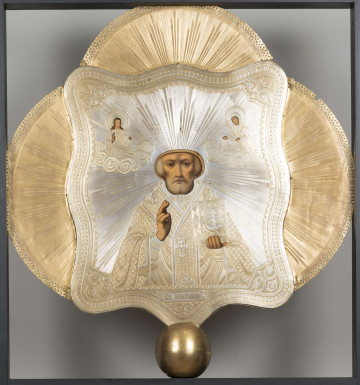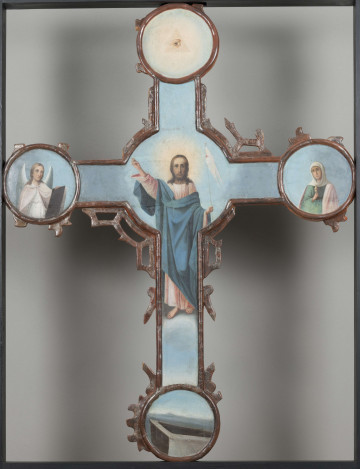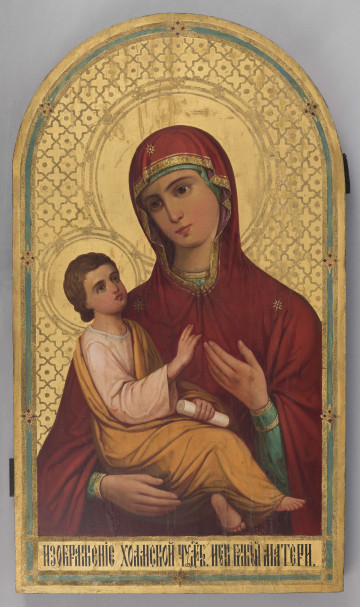
Mother of God of Kazan. Saint Nicholas
1890 — 1910
National Museum in Lublin
Part of the collection: Folk Art of the Lublin Region (17th–1st half of the 20th c.)
Depictions of St Nicholas appear in Central European art, both in the Byzantine and Latin traditions. In the Eastern rite, he is one of favourite and most frequently depicted saints. His popularity was so great that in provincial Russia, until the early 20th century, he was almost universally regarded as the fourth person of the Holy Trinity, and even identified with Christ and God. This identification, in a way, had its source in the coincidence of iconography with the representation of Christ Pantocrator. The Saint is usually depicted in the liturgical vestments of a bishop. He wears a liturgical robe (omophorion) with large crosses and a chasuble (felonion), often also a cope (polystaurion) decorated with crosses, and a mitre on his head. His right hand is raised in a gesture of blessing, in the left he holds a book, usually closed, although on some icons also open. Sometimes Christ and Mary accompany him on both sides at the top of the picture. This one, on a procession float with a three-leaved frame with stylised acanthus leaves, is however shown alone, against a rocky landscape with an Orthodox church. His face is elongated and ascetic, with a thin long nose and small mouth and many wrinkles and furrows. His hair and beard are decorated with a short grey beard.
The tradition of depicting scenes from the life of St. Nicholas was known as early as the 11th century in Byzantium, and reached a peak of popularity in icon painting in the 14th-16th centuries. Saint Nicholas, in addition to being the protector of children, is considered a defender of orthodoxy, an exemplary pastor, and a refuge for the poor and vulnerable. He is also the patron saint of sailors, prisoners and orphans. No other saint, except for the Mother of God, is so often depicted on icons. It was believed that every icon with his image was miraculous. Nicholas was sometimes referred to as "the Russian god", and the belief circulated among the faithful that when God grew old, Nicholas would take over the world.
Author / creator
Dimensions
cały obiekt: height: 65 cm, width: 111 cm
Object type
feretron
Technique
polychromy
Material
wood, oil-based paint
Creation time / dating
Creation / finding place
Owner
The National Museum in Lublin
Identification number
Location / status

1890 — 1910
National Museum in Lublin

1801 — 1900
National Museum in Lublin

1801 — 1900
National Museum in Lublin
DISCOVER this TOPIC
Museum of King Jan III's Palace at Wilanów
DISCOVER this PATH
Educational path